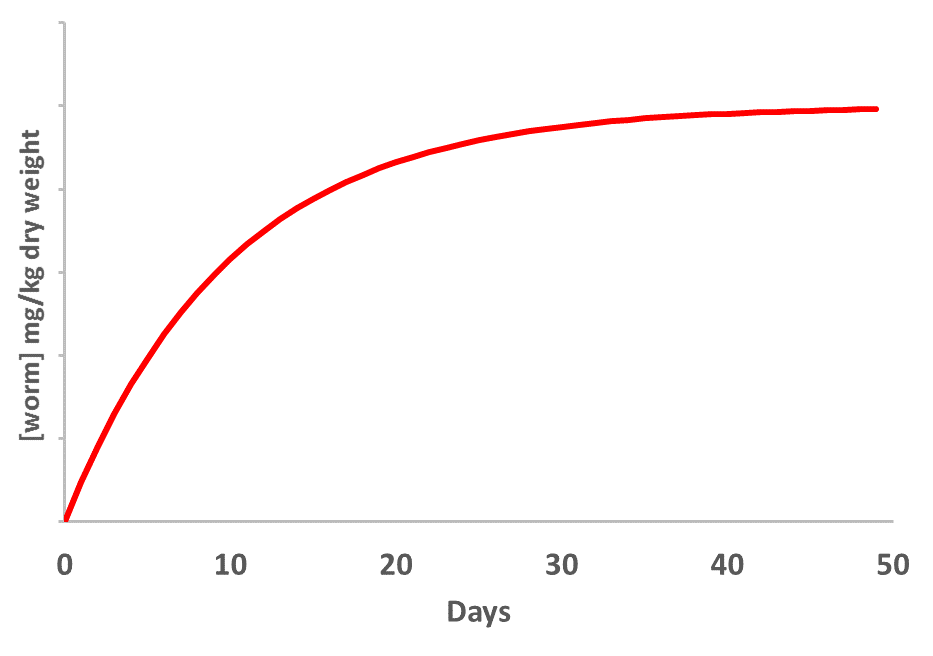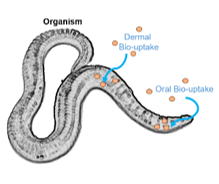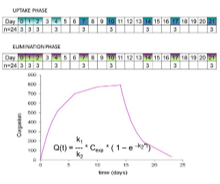Uptake rate
Uptake rate indicates the speed at which an organism takes in material from the medium. It is measured as the increase in concentration of material in the organism per unit of concentration in the medium per day. The overall unit of the uptake rate constant (\(k_{1}\)) is
\(g_{medium}*g_{organism}^{-1} \ast day^{-1}\)
where \(g\) is gram of the medium or organism.
Generally, the modelling of bio-uptake in invertebrates does not take into consideration specific routes of uptake, but rather a summation of routes, e.g. both oral and dermal uptake. However, when needed, uptake rate can be assessed per specific route. Similarly, uptake rates can be assessed for either total concentrations of nanomaterials or for specific forms, although quantification of the different forms of a material in kinetic experiments can be difficult.

Concentration in an organism over time of a given material during uptake phase (conceptual graph of exposure experiment) |
Used for |
 Bio-uptake |
|
Algorithms |
Procedure |
|
\(C_{org} = C_{env} \ast k_{1}\ast SF\ast t + C_{env}\ast \frac{k_{1}}{k_{2}+k_{g}}\ast (1-e^{-(k_{2}+k_{g})\ast t})\ast (1-SF)\) |
|
Read more |
Read also |
|
Visit the NanoFASE Library to read summaries of these reports: NanoFASE Report D9.2 Loureiro et al. Parameter sets on uptake and toxicokinetics of selected pristine NMs in aquatic and terrestrial organisms |
OECD 222. Earthworm reproduction test OECD 305. Bioaccumulation in fish |
Contact
 |
Nico van den Brink Email: Nico.vandenbrink@wur.nl |

